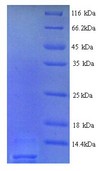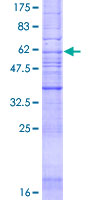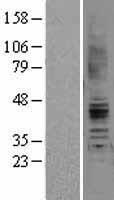order histories, retained contact details for faster checkout, review submissions, and special promotions.
Forgot password?
order histories, retained contact details for faster checkout, review submissions, and special promotions.
Locations
Orders Processing,
Shipping & Receiving,
Warehouse
2 Shaker Rd Suites
B001/B101
Shirley, MA 01464
Production Lab
Floor 6, Suite 620
20700 44th Avenue W
Lynnwood, WA 98036
Telephone Numbers
Tel: +1 (206) 374-1102
Fax: +1 (206) 577-4565
Contact Us
Additional Contact Details
order histories, retained contact details for faster checkout, review submissions, and special promotions.
Forgot password?
order histories, retained contact details for faster checkout, review submissions, and special promotions.
AGTR2 / AT2 Receptor
angiotensin II receptor, type 2
Type 2 Angiotensin Receptor (AT2) has been suggested to affect development, cell differentiation, apoptosis, and regeneration in various tissues. AT2 receptor has been shown to exert counteracting effects on cellular growth and differentiation, vascular tone, and the release of arginine vasopressin (AVP). In each condition, the AT2 receptor appears to down-modulate actions mediated by the AT1 receptor, resulting in decreased cellular proliferation, decreased levels of serum AVP levels, or decreased vasoconstrictor responses. Binding of angiotensin II to the AT2 receptor inhibits guanylate cyclase. Recently, AT2 receptor has been suggested to affect brain development and cognitive function (Vervoort et al. 2002).
| Gene Name: | angiotensin II receptor, type 2 |
| Family/Subfamily: | GPCR , Angiotensin |
| Synonyms: | AGTR2, Angiotensin ii receptor type 2, Angiotensin II type-2 receptor, AT2 receptor, AT2, At2r, MRX88, Angiotensin ii at2, Angiotensin receptor 2, Type-2 angiotensin II receptor, ATGR2 |
| Target Sequences: | NM_000686 NP_000677.2 P50052 |
Publications (2)






If you do not find the reagent or information you require, please contact Customer.Support@LSBio.com to inquire about additional products in development.









